With climate change expected to bring more bouts of extreme weather and longer periods of drought and flooding, this week we take a look at ways to turn the tide on the looming water crisis. Plus, in the news, the schoolboy who's become the youngest person yet to achieve nuclear fusion, the pedicure-inspired tags which are helping track turtles, the new gene therapy breakthrough for treating HIV and, what's worse for you, cigarettes, or sausages?
In this episode
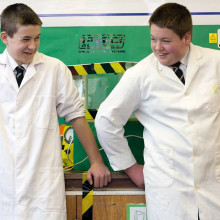
01:21 - Nuclear fusion in the classroom
Nuclear fusion in the classroom
with Jamie Edwards and Jim Hourigan, Penwortham Priory Academy, Preston
This week a 13-year-old British schoolboy has become the world's youngest person to carry out nuclear fusion. Jamie Edwards, is a pupil at Penwortham Priory Academy in Lancashire. He explained to Chris Smith how 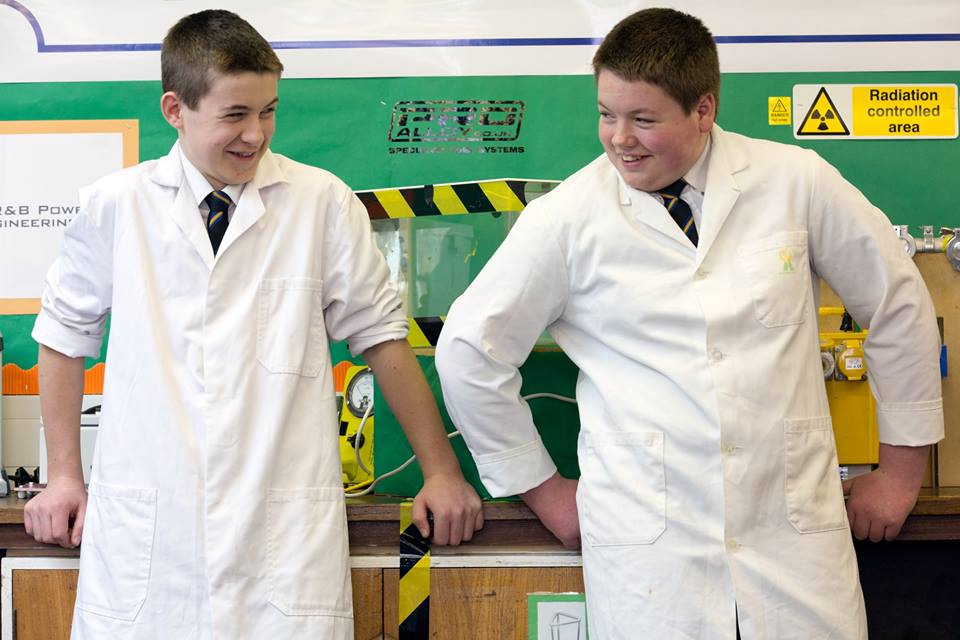 he recreated a star, in a jar...
he recreated a star, in a jar...
Jamie - So, what I've done is I've recreated a process on Earth that happens on the sun on a daily basis. So, nuclear fusion - the process of smashing 2 hydrogen atoms together and making helium. What I do, I have this vacuum chamber and all the air is pumped out of there by two vacuum pumps. Then I add a tiny, tiny bit of deuterium gas - heavy hydrogen - into the chamber. Then I apply about 30,000 volts via an electrode into the centre of this chamber. This rips apart the atom into its electrons and its positively charged nucleus. This positively charged nucleus is accelerated towards the negatively charged electrode. Thousands and thousands of these deuterium nuclei are doing the same thing. Eventually, two of these are going to hit together with a tremendous amount of energy. Fused together then you got a helium atom. But this helium atoms, it's very, very energetic. Instead of releasing the energy as heat, it sends out a high energy neutron. So, you can just get a neutron detector, then you can prove that you've done nuclear fusion.
Chris - The energetic neutron, is that dangerous at all?
Jamie - Well, in large amounts, it could be very dangerous because it's like a very high energy, fast neutron. But to prevent that, I've got like various safety mechanisms in place, tanks of water. They act to slow down the neutron and reduce the energy. Then they're scattered around the room instead of all being directly thrown at me.
Chris - How long did it take you to dream this up?
Jamie - I started in last April and I was looking around for the local nuclear labs like at Sellafield and some of the local universities to see if they'd like, sponsor me into doing a project like this and most of the replies that I was getting were pretty negative really. They were all like, "Thanks, but no thanks." So I thought, maybe if I asked my school and then maybe they could help me. So, I did a Dragons Den style pitch to Mr. Hourigan, my head teacher, he was like, "Yeah, sure. We'll give that a go." I think he's a bit scared at first, but he was alright with it.
Jim - My name is Jim Hourigan. I'm Head Teacher at Penwortham Priory Academy. I had a sort of appointment in the diary from the head of science who said she'd just like to come along with a young boy in year 9 who had a proposal for me. In walked young Jamie and he had a PowerPoint which just said, "I want to build a fusion reactor at Priory. Will you support me?" He talked me through the reasons why he wanted to do it, what was required. He had explained that he'd tried a couple of universities to support him financially. He wasn't getting anywhere, so he'd come to me almost as a last resort because he had this challenge, he wanted to become the youngest fusioneer in the world and he had to achieve that before he came to his 14th birthday and he explained about the young lad in America that had achieved this in 2008, I think it was.
Chris - How much money did he want?
Jim - He costed it and he thought it would cost no more than 2,000 pounds.
Chris - So, did you happen to have 2,000 pounds?
Jim - Yeah, there's always a little bit of money spare. There's always some accounts that don't quite fully spend up. So, it wasn't an extortionate amount of money from my point of view.
Chris - Do you think now that you've returned on that investment, are you glad you made it?
Jim - Enormously so, yeah. Just the impact that we've had in terms of the recognition of the school, of Jamie, what he's achieved. And you can't put money on that. You can't sort of judge that and value that in terms of what we're achieving, but we have a motto at school about being locally respected, nationally recognised. And this is meeting that goal enormously, but that wasn't what we'd set out to do, but it is clearly having that as a spinoff.
Chris - Do you think this is going to translate into more children taking science at a higher level?
Jim - Very much so. We've already had, as soon as children over the last sort of month or so, as they've seen Jamie's project grow and as they've seen the actual reactor develop in one of the labs. We've had children coming to us already asking, can they get involved in other projects. There's a Google science project and there's a few lads and a girl actually want to get involved in that. So already, that sort of enthusiasm is already sort of dissipating into the rest of the school.
Chris - So Jamie, what do you want to do next?
Jamie - In the short term, I want to go on onto doing more research with the fusion reactor that I've got at the minute, looking into uses for these high energy neutrons so they can be made into medical isotopes for uses for detecting cancer, things like that. And then maybe eventually, trying to get nuclear fusion so efficient that it produces more energy out than I've put in. I've already come up with some plans. I'm not going to tell the world just yet.

06:48 - Smoking versus sausages?
Smoking versus sausages?
A survey quizzing more than 6300 American over-50s about their eating habits, and then following them up 18 years, has shown that a diet rich in protein might be as bad for  you as smoking.
you as smoking.
Respondents in the study who obtained more than a fifth of their daily calories from protein were 75 per cent more likely to have died over the 18 year follow up and had a fourfold increase in their risk of death from cancer or diabetes, compared with individuals who only got 10 per cent of their calories from protein.
Commenting on the work, Tom Sanders, Professor of Nutrition and Dietetics at Kings College London, said "Previous research studied over 440, 000 people in Europe looking at this question of red meat consumption; they found a whiff of increased mortality, about 11%, and it's specifically more pointing towards processed meat. So there's a bit of a difference there between the size of effect."
"The paper [published this week] also makes the rather bold claim that meat and cheese might be worse than smoking. But the evidence from smoking is really water tight in terms of increasing heart disease and cancer. If you smoke and drink you have relative risks of about 80 fold greater than someone that doesn't smoke. For lung cancer it's about 10 x great, for heart disease it's about 3 x greater. What they are showing are very small effects, around 0.7. It's in the level that could be noise."
"The sample size in [this new] study, is too small. They haven't got enough people to study."
Aside from the human data, Longo and his colleagues also conducted a follow-up study in mice. Here, the team found that animals fed a low-protein diet had a lower incidence of cancer than those on a high-protein diet. The low-protein mice that did develop the disease had slower-growing tumours.
In both humans and mice, dietary protein intake altered levels of the growth hormone IGF-I, which helps our bodies to grow and has also been linked to cancer susceptibility. The authors propose this as a possible pathway linking dietary protein with the higher mortality rates seen in their study.
IGF-1 could also be used as a possible biomarker in the future to help predict people's risk of developing cancer and then steer them in the direction of particular diets as they age?
"That's exactly what I think is going to have to happen," says Longo. "There could be a lot of people that get to 80 and they still do not need to increase their protein intake. So you will measure their IGF, their level of frailty, muscle strength etc and then make the decision do they need to eat more proteins."
So what is the bottom line? According to Sarah Williams, Health Information Officer at Cancer Research UK, "protein definitely has a place in a healthy balanced diet. It's perhaps a good idea if you eat a lot of it cut back on it if you eat a lot of it to cut back on red and processed meat, like beef, lamb pork. But you broadly want to try to keep it simple, eat plenty of fibre, fruit and vegetables and try to cut back on red meats, salt and high calorie food..."
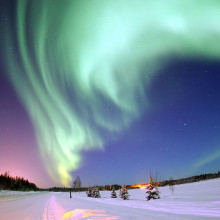
09:53 - Northern Lights
Northern Lights
Last week much of the UK witnessed the spectacular displays of the Northern Lights,  but what causes this phenomenal natural light show? Here's your quick fire science on the aurora borealis.
but what causes this phenomenal natural light show? Here's your quick fire science on the aurora borealis.
- The northern lights appear when electrically charged particles travelling from the sun, known as the solar wind, disrupt the Earth's magnetic field and collide with oxygen and nitrogen atoms in the atmosphere.
- Having collided with the charged solar particles, the gas atoms get excited and release energy, which makes them glow.
- The different colours seen in the displays are determined by which atoms are hit and how much energy they have absorbed
- Oxygen atoms release red light at high altitudes and green light at lower altitudes. Because of the higher air pressure and relatively high amount of oxygen at lower altitudes, green auroras are the most commonly seen.
- Because the flow of charged particles coming from the sun is directed by the Earth's magnetic field, displays are mostly seen in the Polar Regions.
- At the North Pole this is known as the aurora borealis, but at the South Pole the event is called the aurora australis.
- While particles can strike the atmosphere at any time, the northern lights are usually seen at night because they are not a bright as daylight.
- Auroras have been observed on many other planets like Jupiter and Saturn and even on the surface of Jupiter's moons.
- There are many myths surrounding the auroras, in medieval times they were thought to be a sign of oncoming war or famine.
- Occasionally there are huge explosions on the sun known as solar flares which throw off huge amounts of charged particles. If these hit the Earth they can distort the magnetic field and produce aurorae much further south
- The sun is currently at the height of its 11 year solar cycle when these flares are most common. A particularly large burst of solar wind last week led to the northern lights being visible all across the UK, even as far south as Jersey.

12:08 - Gene therapy makes cells HIV resistant
Gene therapy makes cells HIV resistant
with Bruce Levine, University of Pennsylvania
This week scientists announced that they have used gene therapy to modify the immune cells of patients with HIV, to make them much harder for the  virus destroy, which should keep patients healthier for longer. Bruce Levine, from the University of Pennsylvania, co-led the study. He explained to Chris Smith how it works...
virus destroy, which should keep patients healthier for longer. Bruce Levine, from the University of Pennsylvania, co-led the study. He explained to Chris Smith how it works...
Bruce - So, this story really begins with a medical mystery at the beginnings of the HIV epidemic and it was discovered that there was a very small percentage of people that were highly resistant to infection with HIV. It turned out that 1% of Caucasians possess a receptor mutation that makes them resistant to HIV infection. So then, you can begin to imagine what if we can recreate this mutation in people and if they're already infected with HIV, we could remove their immune cells and modify them. Now, you're maybe wondering how we do this and this began working with a company called Sangamo in California about a decade ago who developed a type of molecular scissors if you will. And this is a hybrid protein nuclease that can target this gene for CCR5, the receptor that HIV would otherwise use, induce a nick in DNA and then that gene cannot be translated into protein and expressed on the cell surface.
Chris - So, you were taking patients who currently are infected with HIV, taking out the kinds of white blood cells that HIV would normally attack or infect and then subjecting them to this manipulation that effectively cuts a small piece of their DNA away which removes from the cell a marker, this CCR5 marker that HIV would normally need to get into those white blood cells.
Bruce - That's exactly right. This is a type of cellular engineering and the patients on this study had their white blood cells collected in the laboratory that one normally uses for collecting stem cells for stem cell transplants. We get a bag of white cells, we take it to the lab, we add the DNA and coding for this protein nuclease to induce the mutation in this gene, grow the cells up, freeze them, test them, and then they're reinfused. I think what's really remarkable about this technology is that it is so specific. It can target the one gene. In fact, the part of the one gene out of the 25,000 genes and the entire human genome.
Chris - So, you're able to turn the cells that you manipulate into cells resembling someone who is hard to infect naturally with HIV. You then put the patient's own cells back into them. What happens to those cells when they go back into the body? Do they survive in the long term?
Bruce - So, we think that they will. We have a limited time of follow up of a couple of years for the first patients treated in this trial. We can track the gene edited cells compared to the other cells, and under conditions of removing the patients from their anti-retroviral drug therapy under a supervision for 12 weeks, we can see a selective advantage for the gene edited cells that lack that receptor that HIV needs compared to the unmodified cells.
Chris - I see. So, you take patients off their treatment and see what happens, how their cells fair when they're not on any HIV drugs and these cells that you've modified appear to be less vulnerable to being attacked, which is what you would've expected to happen, isn't it?
Bruce - That's exactly right and over the past 10 years that we've been working with Sangamo, we did a whole series of laboratory experiments and animal experiments to show that we could do this in the laboratory. And now that we've been able to demonstrate that we can do it for the first time in humans, it really bares out the original hypothesis which is that we could recreate this naturally occurring mutation and use it as a potential therapy for people already infected with HIV.
Chris - Why don't the viruses mutate to get around the adaptation that you've made?
Bruce - Well, that's a good question. It appears that this receptor CCR5 is by far the predominant receptor that HIV uses. There are a couple of other receptors that HIV can use, but it's very uncommon for these other types of HIV to be transmitted. Now, the next part of the strategy then is to look at knocking out these other receptors and we have laboratory studies underway to do that.
Chris - How would you actually use this sort of approach? Would you take patients who have HIV, take some blood cells from them, give them this sort of treatment, and then every time the patient's own cells drop a bit because the virus is attacking the cells and making them disappear, you would infuse some more?
Bruce - Well, we may only have a need to do a few infusions or maybe even one infusion because these gene-edited cells do have this selective advantage. Now, we need to do a lot more work and more patience to determine that, but we have data from other gene therapy studies that we've done in HIV that modified cells can persist for years. We're hoping that that would be the case with this type of approach as well.
Chris - Is it safe?
Bruce - It appears to be safe so far. But again, this is a first in human study. We published the results of 12 patients. There are other ongoing clinical trials, but still, a small number of patients. I think in the long term, we have to see what the data will show but in this early studies, it does appear to be safe and feasible.

18:10 - The sea turtle lost years
The sea turtle lost years
Where baby sea turtles go during their first formative years out at sea has finally been revealed, solving a mystery that has been frustrating marine biologists for over 50 years.
marine biologists for over 50 years.
Measuring just 5 centimetres long, freshly-hatched baby turtles toddle down to the ocean toand disappear into the surf. They're not seen again until several years later, when they re-emerge, now dinner-plate sized, in coastal areas.
But what happens during these 'lost years' wasn't known.
The obvious solution is some sort of tracking system. But, as University of Central Florida scientist Kate Mansfield, who led the study, explains, this is a tricky. "[A tag that] stays on a larger turtle for up to 4 years these little guys would shed in 1-2 weeks; so we had to come up with something that was a little bit different".
But, since turtles' shells are made of keratin, the same as our finger nails, the research team sought the advice of professional manicurists.
Using the same acrylic base that keeps false nails in place, the team were able to attach small solar-powered satellite tags to the turtles' backs. "We created a flexible attachment that would allow for about 2-5cm of shell growth," Mansfield explains.
Publishing their findings in the Proceedings of the Royal Society B, the researchers have now charted, over a 220-day period, the travels of 17 baby loggerhead turtles after they entered the ocean from the Florida coastline.
The team were surprised that the young turtles took a much more varied route than they had assumed they would. Previously, scientists thought that turtles only travelled through the outer edges of what are known as the Gyre currents, making a big ring around the North Atlantic Ocean before returning to the coastal areas.
But some of the individuals they studied made their way right into the centre of this 'ring route', revealing a much wider range of the travelling turtles and showing that often they do not not take the quickest or most direct passage to known oceanic developmental habitats.
Young sea turtles are known to hide in floating clumps of Sargassum seaweed. The seaweed is used as a raft and is assumed to provide shelter from predators.
While in the Sargassam, turtles were recorded to have higher than expected temperatures. The group now propose that there is also a thermal reward that comes with hitching a ride inside the seaweed.
As the loggerhead turtle is an endangered species, as are all sea turtles, it is important to gather information about all stages of its life cycle and habitat in order to effectively protect it.
This study is the first to show the areas inhabited by such young turtles, which can disappear for decades. According to Mansfield, "I think that we will start seeing turtles in some areas where we wouldn't necessarily expect them".
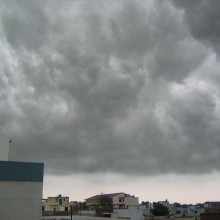
20:26 - Is climate change altering weather?
Is climate change altering weather?
with Don Wuebbles, University of Illinois
Is the extreme weather of recent years a consequence of climate change? Climate scientist, IPCC lead author and 2007 Nobel Peace Prize-winner Don Wuebbles explains 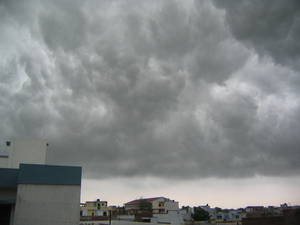 to Chris Smith why he thinks this is a taste of what is to come...
to Chris Smith why he thinks this is a taste of what is to come...
Don - The climate is changing worldwide, climate being the long term variations in weather of course, but it's much more than that. The fact that that change's occurring because of human activity's becoming clearer and clearer over time. We now are beginning to even talk about that dangerous climate change isn't just going to happen in the future. It's happening now.
Chris - Just summarise for us what the big changes are. What are we seeing and where?
Don - So, we're seeing overall long term changes in temperature. We're seeing relatively small changes overall in precipitation. Some places getting dryer, some places getting wetter, but it's much more than that. It's this concern about severe weather. We're seeing much more concern about heat waves, less cold waves overall. We're also seeing more precipitation coming as much larger events than in the past.
Chris - What do we think the drivers of this are?
Don - The analysis are very clear, that you cannot explain these long term changes we're seeing as being due to natural causes. The only thing that really is able to explain the observed changes is the fact that because of our burning of fossil fuels, other human induced changes in our planet that we're increasing the amount of carbon dioxide, the amount of methane, the amount of some other key gases. And those gases so happen are very important to life on Earth in the first place because without those gases, we wouldn't have life here as we know it. This would be a frozen planet. So, having those greenhouse gases is really important. The problem is, because of human activities, we're increasing the amount of those greenhouse gases substantially. The amount of carbon dioxide for example has increased from about 280 parts per million to over 400 parts per million and it continuously increase and that's driving changes. We haven't seen levels of carbon dioxide in the Earth's atmosphere of that size for over 2 million years.
Chris - Do we know what the weather was like 2 million years ago when it was that high?
Don - We don't totally know what the weather was, but we do know that it was a much, much warmer climate on this planet at that time than it is now. Places like Antarctica and Greenland were without ice. Much higher sea levels, we may not be worried about what's going to happen in the next several thousand years, but we certainly should be concerned about what's going to happen over the century when these changes in climate are going to be affecting our children, our grandchildren.
Chris - Obviously, 2 million years ago, there were early pre-humans around, but they certainly weren't emitting CO2 the way that we modern humans are now. So, where did the CO2 that was in the atmosphere and at high level then come from?
Don - Those high levels of carbon dioxide actually came from outgassing from very large volcanoes. Current volcanic eruptions have very small effects in the amount of CO2 in the atmosphere, much, much less than human amount and really, do not contribute to the increase that we're seeing now.
Chris - What about the severe weather manifestations that we're now seeing potentially linked to this? Why do we get more severe weather when the CO2 in the atmosphere rises?
Don - Some aspects of it, we understand pretty well. We know for example as the temperature is increasing, that a warmer atmosphere can hold more water vapour. And so, that additional water vapour is then available for precipitation. In addition, there's just more overall energy in the entire Earth's system because of this increases in these gases. It's just overall trapping more energy into the Earth. So, we expect things like more precipitation coming as larger events. But also, analyses are tending to show that some very large events like hurricanes are likely to be more intense in the future. Right now, we can't say much about the number, but the intensity is likely to be larger.
Chris - What about time scale? When should I consider moving further from the coast?
Don - Well, the big concern of the coast particularly are going to be the increase in sea level and storm surge. The projections over this century are something like 20 to 80 centimetres by IBCC. I think in the National Climate Assessment, we were a little bit more generous and said it could be as much as a meter. None of that is going to happen soon, but we are seeing an acceleration in the rate of sea level rise. I think you clearly have several decades available for you to still live near the coast, but after the next few decades or so, you may get concerned.
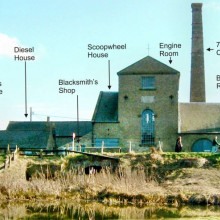
25:34 - Draining the Fens
Draining the Fens
with Keith Hind, historian, Malcom Hensby, Streatham Engine, Dan Pollard, Denver Sluice Complex
Cambridge was once surrounded by a marshland called the Fens. But in mediaeval times, and with the advice of Dutch drainage experts, the area was dried. The water now exits to the sea via an intricate system of ditches and rivers that empty into an engineering marvel called 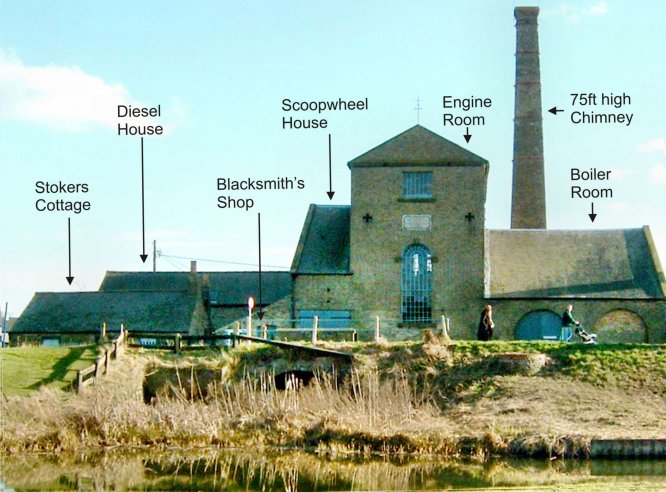 Denver Sluice. Graihagh Jackson went to see how it was done all those years ago...
Denver Sluice. Graihagh Jackson went to see how it was done all those years ago...
Graihagh - Through much of this year so far, Britain has been facing a flood crisis. Some parts of the country have seen more than half a metre of rain this winter, 36% more than normal. As a result, thousands of homes have been flooded. But flooding and flood management isn't just a recent phenomenon. In fact, the UK has a long history of water management with one of its bravest endeavours being the reclaiming of The Fens. In 1631, they drafted in Dutch engineer, Cornelius Vermuyden and the draining began. Today, the canals are sandwiched with grassy embankments protecting the lowlands and its cows from flooding. But I was keen to know what the area would've been like before all this engineering began. Keith Hinde is a local historian and he painted me a picture.
Keith - In the summer, it was what you would call grazing land, but in a bad winter, it would've been very much like the Somerset levels are now, covered with water.
Graihagh - So, what exactly did they do to drain the fens in the early 1600s then?
Keith - They had this man called the Vermuyden, a Dutchman. His main thing in the south level was to construct two major channels, or rivers, through the middle of the fen and in between he created a wash-land so that when you got flooding, they simply filled the wash-land. Then at the end of the 2 rivers which were 20 miles long, he installed Denver Sluice to control the water flowing out to the sea, at King's Lynn. In that way, he mostly preserved the rest of the fen from flooding.
Graihagh - But as the pit shrank and the level of the land fell, it ended up lying lower than the rivers, so the water had to be pumped up and into the river, initially using wind-powered pumps. Then with the advent of the industry revolution, steam. The heat generated from coal was used to create steam at high enough pressures to power a water wheel which could remove 120 tons of water every minute. Sadly, most of these steamers have since been decommissioned. There is however, one complete relic left, Stretham Old Engine. Built in 1831, the yellow bricked building and its 75 foot chimney sit a few feet away from the canal. Inside is a beam engine complete with 3 huge boilers. Malcolm Hensby is a Trustee here and he took me for a tour.
Malcolm - So, James Watt invented the beam which is at the top of the engine and it turns the vertical power created by the piston going up and down to a circular motion which turns a fly wheel, which turns the scoop wheel which lifts the water from the low lying land to the river. Although it last worked under steam in 1941, we have more recently installed an electric motor which turns the machinery at a very slow speed.
Graihagh - So, how big an area exactly would've this place have been draining?
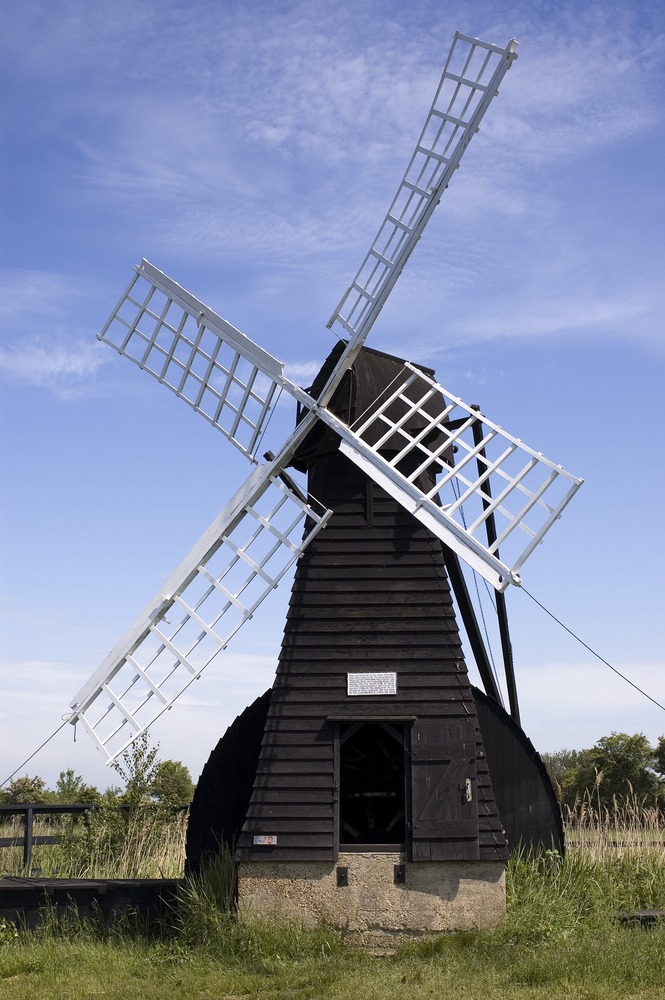
Malcolm - About 6,000 acres.
Graihagh - What sort of operation would that have been?
Malcolm - There was a permanent staff of two and I think the longest period it worked was 6 weeks continuously. During that time, the engine would use about 5 tons of coal per 24-hour operation.
Graihagh - So, what happens today then?
Malcolm - It's redundant and has been since 1947 when the engine was taken out of commission and replaced by the system today which is a series of remotely controlled electric pumps, all controlled from Denver and that controls the level of the water in the river system throughout the entire region.
Graihagh - The Denver Complex is one of the largest sluice systems in the UK. These 5 concrete barriers hold back the tides from drowning much of Cambridgeshire and Suffolk, as well as quickly discharging waters out to sea in periods of heavy rain. The head sluice is made up of 4 concrete segments, the big eye, a navigation gate for large vessels and the little eyes which are three smaller, but by no means small sluices.
Dan - Dan Pollard. I'm the Superintendent for the environment agency at the Denver Complex.
Graihagh - How exactly does the Denver Sluice System operate?
Dan - It works by drawing floodwaters down from Ely and Cambridge. And so, we have to change the gradient on the levels here so it draws down huge quantities. We've got the head sluice that we're standing next to, can put up to 120 tons of water a second.
Graihagh - Why do you need a sluice?
Dan - So during the summer months, we use the sluice to actually control water to make sure there's enough water in there for the boats. So the sluice is one, for getting rid of floodwater, but two, for actually maintaining river levels, and the low flow conditions too.
Graihagh - There's also been a bit of press about dredging. Should we be doing more of it?
Dan - We have had a report done not so many years ago called the tidal river strategy. It did say that dredging in this area is not sustainable purely because of the cost.
Graihagh - How might our rivers be managed in the future then?
Dan - I think there's got to be - it's got to be one situation dictates. Each case has got to be looked at individually whether we pour more concrete and more stone into an area or whether we have some sort of soft-defence and some sort of strategic retreat.
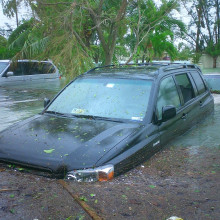
32:26 - The impact of local flooding
The impact of local flooding
with Shiela Abrams, Cambridgeshire
2014 started with major flooding across England and Wales. At the last count, almost 6000 properties were flooded and insurers estimate the damage exceeds £203 million. Sheila Abrams, who lives in Debden, 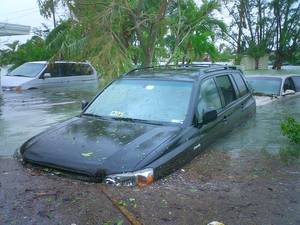 just south of Cambridge, described her experiences to Hannah Critchlow...
just south of Cambridge, described her experiences to Hannah Critchlow...
Hannah - The waters have now gone down I believe, but what damage are you left with?
Sheila - It's quite a lot of damage actually, far more than I would've thought. The kitchen's had to be stripped out and tomorrow, the month after the flood, the builder's coming in to take the floors out and the plaster off up to a meter, and all the insulation out so that we can then dry out where it was flooded before we can start making it good and putting it all back in again.
Hannah - So, it's causing quite a big inconvenience in reshuffle in your house I imagine. Were you aware that your house was at risk of flooding when you bought it?
Sheila - Not at all. We've lived here since 2000 and we've never had any sign at all that it might flood. The ditch that runs round our property is massive. It's about 12 foot deep. In fact, that ditch wasn't full of water, but the water leading into it had overflown and sort of come out of the ditch system if you like. That had never had before and it just flowed into our property.
Hannah - So, it was a big surprise when you got home and saw the damage then. Is there anything that you think you can do to help prevent this happening in the future?
Sheila - There were a few things. It would be nice to have a larger culvert put in so where the bottle neck was, where it started coming out of the system. I don't know whether that will be feasible, but I think the fact that we're aware that it could happen now, will wake us up as we had no idea where all this water was coming from really. We will raise up some levels to try and stop the water ever doing that again. I'm not terribly confident that it won't happen again, but we'll do our best to keep it out, I don't want it happening again.
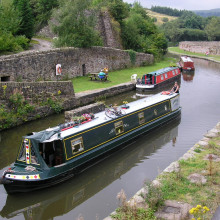
35:11 - Stopping rivers bursting their banks
Stopping rivers bursting their banks
with Jenny Mant, River Restoration Centre
Jenny Mant, from the River Restoration Centre, explains to Hannah Critchlow how we manage river levels and how we can stop more rivers from bursting their 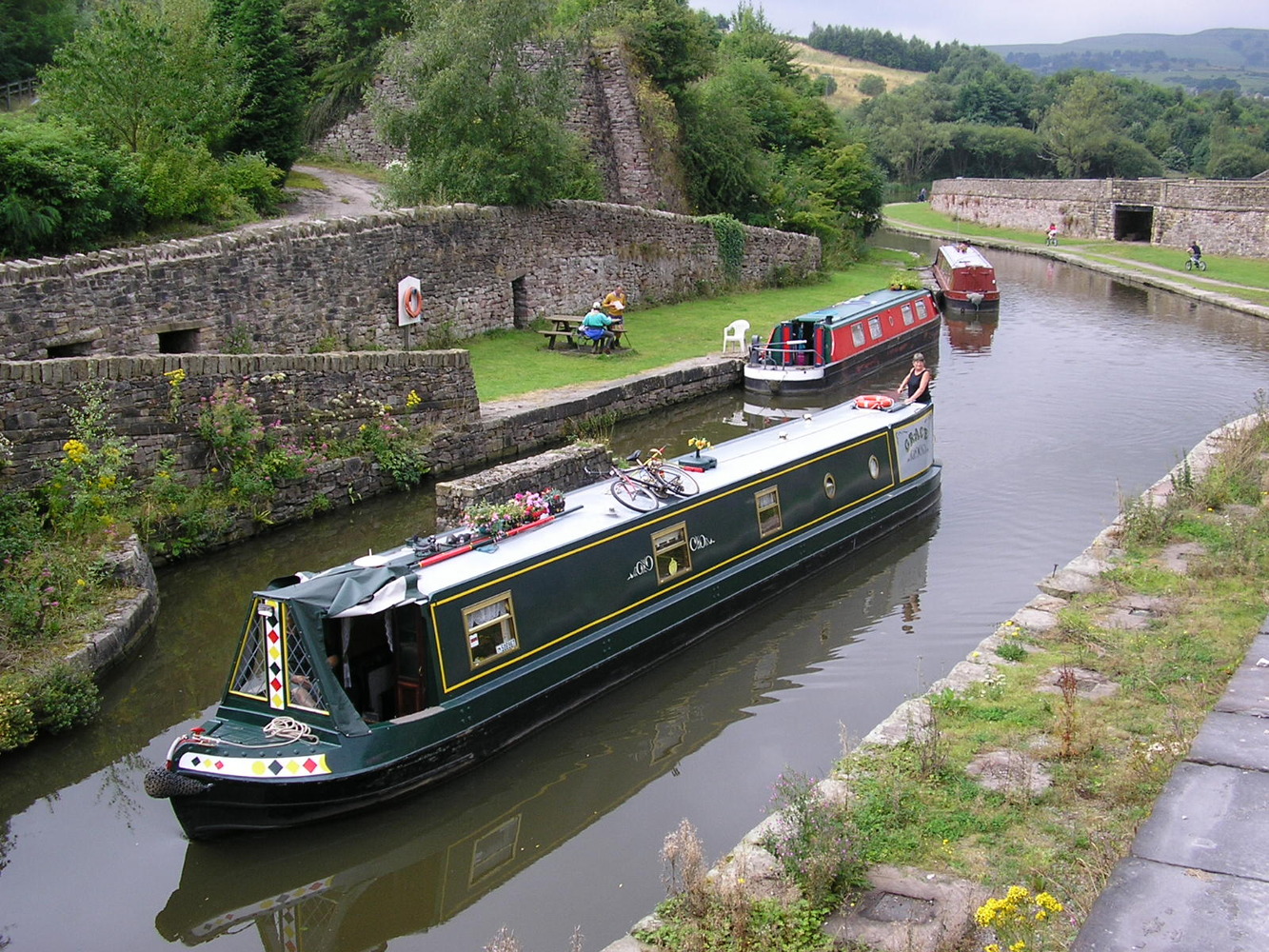 banks in the future...
banks in the future...
Hannah - So, I live on a house boat on the River Cam myself and I'm only too aware of how much the water level has been rising and falling over the recent weeks. The river has been bursting, its banks at very frequent intervals, and there's been some days when I haven't been able to board my boat. I've been trying to don the wellies and kind of try and get onto my boat, hauling myself up with ropes, but it hasn't been possible. What's been going on to cause this much change with the river levels?
Jenny - Well, I think it has been extremely unusual conditions and in fact, there's estimates now that we haven't seen something like this for the last 200 - 250 years. And so, there has been an extreme amount of rain in the whole system. To some extent obviously, rivers and their flood plains are there to manage the rivers. We've just experienced a lot of rain, the ground waters are full with water and there's really nowhere for the water to go.
Hannah - We were hearing earlier from the people that work with the environment agencies, so the national body that looks after our river ways that dredging just isn't a sustainable option. So, removing that silt deposition at the bottom of the river in order to increase the capacity of the river, that could be possibly an option to help prevent against river flooding, but it's not financially sustainable? Is that true? What's the research on that?
Jenny - The issue with dredging is, if you, for example equate it to going to the doctors, if you're dredging, you're almost fixing the symptoms and you're not really looking at the cause. It is extremely expensive because if you dredge a river, you are going to have to keep on dredging it because as soon as you stop dredging, the fine material will come in to the river that comes from the areas around within the catchment, and that will then deposit back within the river. So really, I think what Dan was saying earlier was, you have to think about each catchment as an individual catchment and think about the management of that catchment, both within the urban and the rural areas to try and stop the sediment getting into the river in the first place. That way, you will then not need to dredge the rivers to try and think about the natural way that a river would manage itself if you like.
Hannah - And you mentioned the causes earlier. So, what could be an example of these causes? I've read in the papers recently that intensive maize farming for example, right up against the river bank, that's not a good thing to help with this flooding issue.
Jenny - No, it's not the maize itself, but it's the way that it's actually managed within the rural areas. So, things like not ploughing right up to the edge of the river is very important because that stops a massive amount of sediment getting into the river. And also, simple things like thinking about where your gated access is, and if it's at the bottom of the slope, at the bottom of a river then that immediately creates a pathway for sediment to go straight in to the river. So, it's thinking about the whole of the catchment management. It's not just the rural areas at all. We need to think about the urban areas, but I think you're talking about that later on in the programme.
Hannah - So, just in the houses nearby my boat on the river, there's lots of flood gates against people's front gardens to try and protect the water seeping into the houses and again, causing lots of damage as Sheila was alluding to earlier. So, is this something that we're going to increasingly have to stop putting in in our houses around the UK and in these areas that traditionally, we didn't think were actually in danger of becoming flooded?
Jenny - Well, quite possibly or at least trying to set back a bit from the river as well. So you're giving the river more space to enable it to manage the floods. But again, as we heard earlier, with climate change coming into the scenario, we're in a situation where we probably may be seeing more events of this kind of nature in the future. So again, it goes back to trying to think about how we manage the whole catchment and part of that may be, that we have to think about how we deal with our houses being right next to the river.

40:14 - The Blue-Green Cities Project
The Blue-Green Cities Project
with Nigel Wright, University of Leeds
What can cities do to reduce the risk of flooding? Professor Nigel Wright, from Leeds University, explains the  concept of the Blue-Green cities project to Chris Smith...
concept of the Blue-Green cities project to Chris Smith...
Nigel - With the river flooding, you're looking at rain that's fallen upstream, gone into the river and then threatens the city. But of course, the rainfall occurrs in the city as well and with all the surfaces we're putting in, impermeable surfaces that the rain can't pass through. That rain that falls in the city has to go somewhere and that's what creates a problem with what we call surface water flooding in urban areas.
Chris - So, this would be the point that when rain used to fall down and hit the ground, it would soak into the ground like a giant sponge and there would be a latency between the rain arriving on the surface and then making its way into the river whereas if I come along and put roads and concrete and surface coatings on the ground, then that water doesn't soak in. It's going to run off into a drain and that drain is very quickly going to transmit it to a river.
Nigel - Well, that and then we've designed the drains for a certain level of rainfall, but with more of these car parks, for supermarkets, people covering up their front gardens. That increases the amount of water going into the pipes and the pipes reach capacity, and then the water can't get into the drainage system and just spreads out around people's houses.
Chris - What does it actually do to groundwater though when people do build say, a new big housing development on a piece of countryside which was previously just open land? What happens to the water table around the development?
Nigel - Well, if that water is no longer seeping into the ground then the water table is likely to drop to an extent.
Chris - So, does this mean that the buildings are all going to sink and so therefore, that in fact, the land is going to drop a bit and therefore, they might be at more risk of flooding later?
Nigel - I don't think that's not a problem in most of the UK, though I know it's a problem where I used to live in the Netherlands and therefore, it may well be a problem in the area where you are, particularly if you have peat. If that starts to dry out then the land surface can sink. So yes, that's another problem with covering over the surfaces which is why we're actually quite keen for people to put down surfaces that the water can actually seep through.
Chris - Some cities do do this though. I've lived in Australia in the past and walking around in Sydney, you will see verges adjacent to pavements completely grassed and this means that when the rain hits the pavement and boy, does it hit the pavement sometimes, it can run to the side of the pavement and it then soaks in. Is this the sort of thing you're getting at?
Nigel - Yes, that's it and then there are places in the UK and in other countries that already do this. One thing that was done a few years ago by some councils is to say that if you want to cover your front garden to put your car on, if you do it with an impermeable surface, you need planning permission, but you fit a permeable surface, then you don't. So obviously, people will go for the permeable surface and it's surprising across a large city, how much difference that can make.
Chris - Isn't it a bit late for most of our cities though? Have we not now got a problem that we've made and now, we've got to try and undo it rather than just regulate people making new developments?
Nigel - We certainly need to work with the new developments and legislation was put in place in 2010 that's yet to be implemented to say that all new developments must use these what we call sustainable systems where the surfaces are more permeable and the water is kept at source. But for the other areas, they're always being renewed. We're renewing road surfaces, we're looking at pavements all the time, and we can look at how we can replace them in a way that holds the water back at the source.
Chris - What can you tell us about the whole point of the Blue-Green City project? How did it get started and what's it trying to do?
Nigel - What we're looking at there is the sort of things we might do to decrease the risk of flooding in urban areas, but also, saying that a lot of those have other benefits beyond flooding. So, if we're introducing more grass and green spaces within cities, there might actually be multiple benefits so we could do these things for many reasons. And we're trying to work how we can quantify these new methods because of course, developers are keen not to spend a lot more money. They like to stick to what they've done before. So, what we wanted to do is try and demonstrate and give them some confidence that these measures can work.
Chris - Have you got some numbers you can put on this yet? Can you actually quantify, this would be the direct benefit to the city for instance?
Nigel - That's what we're working towards. We want to get those numbers because in all these debates on flooding, people have many different ideas as to what we could do to improve the situation. But what we want to come up with is some hard figures. You heard earlier the question of, should we dredge or should we store water in the uplands? These are all good ideas, but what we're trying to do is put some numbers on that. So, we have colleagues at Cambridge University in particular who are working on calculating the economic benefits of these measures.
Chris - Rather than just re-inventing the wheel here in Britain, what can we learn from looking at other countries and how they solve this problem? You mentioned the Netherlands earlier. I mean, they must know more about this than anybody.
Nigel - They do. They're particularly focused on flooding from the coast, from the sea, and flooding from rivers, and they do have flooding in urban areas with problems you get with heavy rainfall. But in most Dutch cities in the residential areas, there's no drainage from the street into the drainage system. All the streets are made with block paving, so the water seeps down between the blocks and goes into the sand underneath and will eventually go into the drainage system, but it takes a lot longer. In my house, when I lived there, there was no drainage in the garden. So if it rained heavily, I could have 5, 10 cm of rain collecting in the garden. But it didn't affect the house and eventually, that would seep out into the system. So, it's not really about storing the water at source. It's just holding it back for a bit. That means you don't get the peak that will flood the streets and people's basements.
Chris - That's presumably the same aspiration when people plant these green rooves where you have a big thick layer of various plant species growing on a roof which acts like a big sponge when the rain falls.
Nigel - Yup, that's it. Green rooves, water butts and even different sorts of plants in the garden. There was a discussion earlier about how farming practices can increase runoff and we can even help a bit by making sure there's a lot of vegetation cover in our gardens that will hold the water at source.
Chris - It doesn't sound like it might go down well with all planners though, Nigel.
Nigel - No, it doesn't. But if we start this process and we start to do some of it then it makes a difference. And if as I was explaining with the people covering their front gardens, that can make a big difference if you get 20% or 30% of the people adopting these measures.
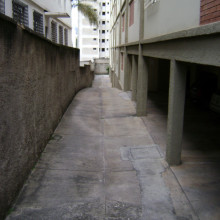
46:55 - Combating flood risk in future
Combating flood risk in future
with Roger Falconer, Cardiff University
Climate change models predict more intense storms and a higher frequency of flooding in some parts of the world. So what can be done to mitigate the threat from floods? Roger Falconer, from 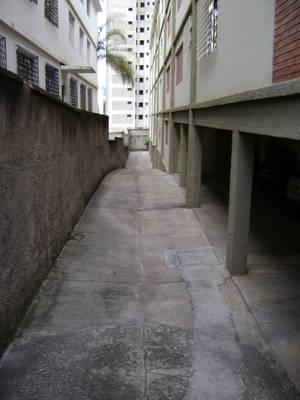 Cardiff University, takes Chris Smith through some scenarios...
Cardiff University, takes Chris Smith through some scenarios...
Chris - First of all Roger, what do you think of what Nigel was suggesting about the way we just retrofit our cities and also encourage people to just have more gardens instead of tarmac?
Roger - Well in principle that's fine, I would support that but if you look at the Somerset levels area, the groundwater was pretty saturated anyway and I know from living in Cambridge some years ago, the same occurs in the Cambridge area as well. So, when you have big floods like we've had recently, the groundwater is usually at ground level and in that case, changing the ground conditions wouldn't make a lot of difference.
Chris - So, the water goes in and it's got nowhere to go so it just runs straight off anyway.
Roger - That's exactly what happened in the Somerset levels area.
Chris - Indeed. So instead, what might we be able to do? What sort of strategies could we explore?
Roger - One of the arguments is we shouldn't build houses on flood plains. But if you look at almost every major city, near the coast, London, Cardiff and so on, most of the city is on a flood plain. So, you have no choice, but to build on the flood plain in the future. You wouldn't build any houses in York, Cardiff, London, and a long list of other cities if you adopted the policy of never building anything on the flood plain. But I think we can look more at how we build our houses. If you look at houses in the States for example, it's quite common for the garage to be on the ground floor, but most of the living area is on what we would call here the first floor and possibly a floor above. And I would be perfectly happy to buy a house which had a garage on the ground floor and a play room for the kids for example. But no real power of any significance there, and then on the first floor, have my living area. Then at least if my house was flooded, the garage would be messed up, but the living area and probably then the second floor would be fine. So, I think this is a solution which look more to.
Chris - Good for new development. Obviously, something to bear in mind. What about actually things we could do to try to mitigate with the housing stock that we currently have? What about for instance trying to tether the way in which we handle flooding and turn it to our advantage so we can use the water that we accumulate in other ways because water is a pretty precious resource these days, isn't it?
Roger - Well, one of the things that's been proposed at the moment and many proposals on the table, to build large, coastally attached lagoons to generate power. So, these are marine renewable energy projects. They're not for flooding as such, but if you look at many of the attractive sites such as for example, Bridgewater Bay, and the North Wales Coast, these are communities very prone to flood problems. If we were to build large coastally attached impoundments, similar to barrages, around these embayments, we would have a huge opportunity to alleviate a lot of the flood risk.
The problem in the Somerset levels and the reason why dredging is not a solution in my view, as things stand at the moment is basically the flow in the river is governed by the water surface slope. And in the Somerset levels, you almost have flat land similar to Cambridge. Therefore, the flow in the canals and the rivers, and so forth is extremely low velocity. Dredging doesn't really change that. I live in Cardiff and we have a bay here. If you dredge Cardiff Bay, it wouldn't make any difference to the flow with through the bay.
Chris - So lagoons might be one answer.
Roger - Well, if you want to increase the water surface slope, we either want to raise the land, that's a nonstarter, or we drop the sea. If you build a lagoon, close off the sea from the land, use it most of the time to generate power and then when you need it for flood mitigation, you would not generate power on the incoming tide.

Does lightning fry fish?
Hannah - So, why don't we see floating electrocuted fish following a thunderstorm? First up, some facts. Lightning is a massive electrostatic discharge, the sudden flow of electricity. During a thunderstorm, regions of positive or negative charge build up within or between clouds and the surface of the planet. This charge is eventually discharged by a lightning flash or strike, carrying a whopping 30,000 amperes of current and transferring 500 megajoules of energy. This is the equivalent energy striking in a split second as a colossal 1,400 100-watt bulbs running for an hour. So, since humans are concerned about being frazzled when lightning strikes on land, aren't fish worried in water? Over to the expert.
John Jensenius - My name is John Jensenius. I'm a lightning safety specialist with the National Weather Service in the United States. Really, when you get down to it, you have to look at what happens when a thunderstorm develops and what happens just prior to the lightning strike. There's a charge that builds up in the cloud and there's an opposite charge that builds up on the surface of the water. So, when lightning flash occurs, the discharge discharges along the surface. So, the effect of the lightning is pretty much contained to the surface of the water and in fact, the fish that are swimming below the water are safe. They're completely unaffected by the lightning.
Hannah - And listener Erik Sandberg agrees. He says that the lightning electricity will mostly stay on the surface of the water. He also says that he thinks it's to do with the fact that the water is such a good conductor and the electricity will quickly be dispersed or spread-out to the surrounding water close to the surface.
John Jensenius - Well, [salt] water is a good conductor of electricity, and that's one of the reasons that the charges can move to the surface of the water and it is true when lightning strikes the water that discharge literally spreads out along the surface. Of course, with the fish below, they should be safe.










Comments
Add a comment